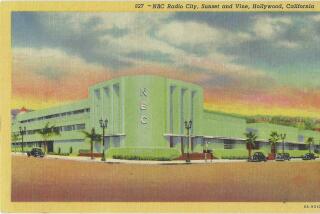Evolution of Local News a Steady Downward Spiral
An obviously bored philosopher long ago called television “the opiate of the masses.” He probably never saw much local television news or he might have reflected for many years on the topic and taken out a multimillion-dollar grant to research the effects of employment at television stations on laboratory rats, in order to discover who is really being drugged.
This occurred to me the other night while I was watching Channel 10 weatherman “Captain” Mike Ambrose explain in exhaustive detail the atmospheric conditions creating a storm front somewhere over the Pacific. I just wanted to know if it was going to rain the next day. But I sat transfixed, thrilled and impressed that Mike Ambrose has been gainfully employed for decades as a meteorologist, and that people call him “captain” for some completely unknown reason.
Television is a powerful medium when it can cause people to call a grown man “captain,” even though he’s not in the military. It is indeed a wonderful and mysterious industry.
Though insightful about the big picture, if the witty philosopher had studied further he might have discovered that modern local television news is more like the “All My Children,” National Enquirer and Donkey Kong of the masses. The quirks and personalities of the industry entertain and amaze the public more than any soap opera or video game.
In San Diego, heavily promoted television news types are the closest thing to local celebrities the city can offer, except for a few bland politicians, a handful of equally bland sports stars, and the guy who dresses in a chicken suit. When Channel 10 anchorwoman Kimberly Hunt married Chargers linebacker Billy Ray Smith two years ago, it was treated by some like San Diego’s version of a royal wedding, complete with elaborate security and extensive gossip column coverage.
To a degree, the interest is no accident. The stations want San Diegans to think of anchors as glamorous and exciting; news hounds who would be equally comfortable at a La Jolla charity ball and the mayor’s latest press conference.
Of course, all this would make local television news departments little more than fodder for bored gossip columnists were it not for one amazing twist: People believe in local television news. They watch it, learn from it and trust it to give them the important news of the day.
As much as we in newspapers like to think we are the one and only source of information on Earth, it’s not so true any more. People rely on television for news, even if it just means having the television on in the background while they eat dinner.
All this is scary to some of us, who wonder if it is really a good thing for people to rely on programs that use similar criteria as the producers of “The Cosby Show” to form its product. A vast array of powerful forces are shaping local television news, and the quest for quality news product is falling further down on the list.
Already, stations are more concerned about giving people the news they want, instead of the news they need. Forced to fight for the biggest ratings possible, their primary interest is in finding news that is visually stimulating and non-offensive.
That, of course, is not new. But, as we look to the future, we see that television news will continue to evolve.
Undoubtedly, there will be more 10 p.m. newscasts. An NBC affiliate in Sacramento has found success by beginning prime-time network programming an hour earlier each night, allowing for a 10 p.m. newscast. A San Francisco station is following suit, as will others.
The next year will also see the implementation of an overnight rating service, with devices hooked up directly to selected television sets to measure viewership. KNSD-TV (Channel 39) and XETV (Channel 6) are paying for the service, scheduled to begin next fall, which will allow stations to get more accurate readings of which programs work. It remains to be seen what impact that will have on programming, but in other markets it is not unusual to see more sensational shows as a result. Bikini specials have been known to attract great overnight ratings.
Even worse, the list of topics local news will only barely deign to cover probably will grow longer. National and international news will be turned over to the fading networks (for as long as the networks have newscasts) and CNN, and politics and business stories will be left to newspapers.
Local television will become excessively local, trying to address the only niche it believes it has left. Tough economic times will mean staff cuts, and the news operations will be more limited in their coverage of day-to-day news.
The result will be local news services that quickly wrap up the news of the day and then move on to magazine-style features in an attempt to compete with “Hard Copy,” “Entertainment Tonight” and other syndicated programs. The local stations will always have a place for local news--when cable is offering people 50 channels, local news is the only thing that will set the local stations apart from the competition--but it will always be viewed by station executives as little more than a revenue base.
In other words, there will always be a place in local news for “Captain Mike.”
Some aspects of the future are harder to predict without a crystal ball, but here are some possibilities for 1992:
* The results of the 1990 U.S. Census will finally convince local stations that it is demographically correct to feature Hispanics as their main anchors. As a result, Channel 39 will hire Linda Ronstadt. Channel 10 anchorman Stephen Clark will change his name to Stephen Gomez.
* Confused by the specifics of the race for mayor, at least one local station will accidentally call Roger Hedgecock the “current mayor of San Diego,” and at least one television reporter will ask Susan Golding what she would do about the Soviet Union if she was elected mayor.
* The ratings success of “Murphy Brown” and the recent pregnancies of Denise Yamada and Kimberly Hunt will make pregnancy the latest hot trend in television news. At least one anchorwoman will use a pillow to fake pregnancy.
* Impressed with the attention given the William Kennedy Smith trial, Channel 51 will unveil the Blue Dot Sportscaster, whose face will be electronically obscured.
* With surveys indicating that health and fitness features are extremely popular, Channel 10 anchorwoman Carol LeBeau will lead a daily aerobics workout during the 5 p.m. newscast and soon will be called the Richard Simmons of San Diego television.
* Looking to capitalize on the popularity of “America’s Funniest Home Videos” and the growing use of dramatic amateur video in newscasts, Channel 39 will debut a new news show called Home Video News.Hosted by a Crime Beat star Paul Bloom, it will become the station’s most popular show.
CRITIC’S CHOICE
‘HIGH HEELS’ AT HILLCREST CINEMAS
Pedro Almodovar’s films tend to be wild rides; adventures in the lives of the eccentric characters created by the imaginative director. His latest is “High Heels,” now screening at the Hillcrest Cinemas. Like most of his films, it is a comic and often erotic romp through the lives of an aging singing star, her daughter, a TV news executive and a transvestite.
More to Read
The complete guide to home viewing
Get Screen Gab for everything about the TV shows and streaming movies everyone’s talking about.
You may occasionally receive promotional content from the Los Angeles Times.






